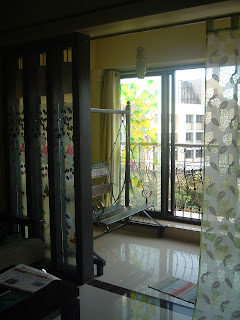In response to the rising demands, the construction sector has embarked on projects and partnerships in several countries to improve sustainability performance. A number of tools and rating systems have been created in order to assess and compare the environmental performance of buildings.
These initiatives have already had an impact on how buildings are designed, constructed and maintained, the primary focus being improving the long-term performance of buildings by taking into account long-term benefits and costs. Such environmentally responsible buildings came to be called Green Buildings. The following are some of the Green building ratings systems developed worldwide.
o The Leadership in Energy and Environmental Design (LEED) Green Building Rating System™ developed in the US
o Building Research Establishment Environmental Assessment Method (BREEAM) developed in England
o High Quality Environmental standard (HQE) developed in France.
Of these LEED has been among the most widely adopted, with State and local governments across United States adopting LEED for their public-owned and public-funded buildings. LEED compliant projects are in progress in 41 different countries, including Canada, Brazil, Mexico and India.
Leadership in Energy and Environmental Design (LEED) TM
The Leadership in Energy and Environmental Design (LEEDTM) is a third-party certification program and the internationally accepted benchmark for the design, construction and operation of high performance green buildings developed by the United States Green Building Council (USGBC).
LEED encourages and accelerates global adoption of sustainable green buildings and development of practices through the creation and implementation of universally understood and accepted tools and performance criteria. It also provides building owners and operators the tools they need to have an immediate and measurable impact of their buildings’ performance.
LEED promotes a whole-building approach to sustainability by recognizing performance in five key areas of human and environmental health:
o Sustainable site development
o Water savings
o Energy efficiency
o Materials selection
o Indoor Environmental Quality
LEED® Green Building Certification System
LEED for New Construction and Major Renovations is designed to guide and distinguish high-performance commercial and institutional projects.
LEED for Existing Buildings: Operations & Maintenance provides a benchmark for building owners and operators to measure operations, improvements and maintenance.
LEED for Commercial Interiors is a benchmark for the tenant improvement market that gives the power to make sustainable choices to tenants and designers.
LEED for Core & Shell aids designers, builders, developers and new building owners in implementing sustainable design for new core and shell construction.
LEED for Schools recognizes the unique nature of the design and construction of K-12 schools and addresses the specific needs of school spaces.
LEED for Retail recognizes the unique nature of retail design and construction projects and addresses the specific needs of retail spaces.
LEED for Healthcare promotes sustainable planning, design and construction for high-performance healthcare facilities.
LEED for Homes promotes the design and construction of high-performance green homes.
LEED for Neighborhood Development integrates the principles of smart growth, urbanism and green building into the first national program for neighborhood design.
ADOPTION OF LEED CERTIFIED GREEN BUILDINGS
LEED has been a galvanizing force in the industry and has helped accelerate the trend towards Green Buildings. Today there are 16,727 member organizations including corporations, governmental agencies, nonprofits and others from throughout the industry.
Every business day, $464 million worth of construction registers with LEED. By 2009, 80% of corporate America are expected to be engaged in green at least 16% of the time, and 20% will be engaged in green 60% of the time. According to the McGraw Hill Green Building Smart Market Report 2006, approximately 10% of commercial construction starts are expected to be green by 2010, and the overall value of Green Building construction projects is expected to increase to $60 billion by 2010.
In India, the awareness and adoption of Green Building is picking up, aided by the development of the LEED-INDIA Green Building Rating System adopted by the Indian Green Building Council (IGBC). The two specific programs have been currently adopted
o LEED India for New Construction (LEED India NC)
o LEED India for Core and Shell (LEED India CS)
IGBC now has 366 members, and there are 254 registered buildings, with 26 of these buildings already getting LEED certified. Totally in India we now have 151 million square feet of Green Building footprint. Additionally the IGBC Green Homes rating system has 65 registered buildings and 88 million square feet of Green Home footprint.













































